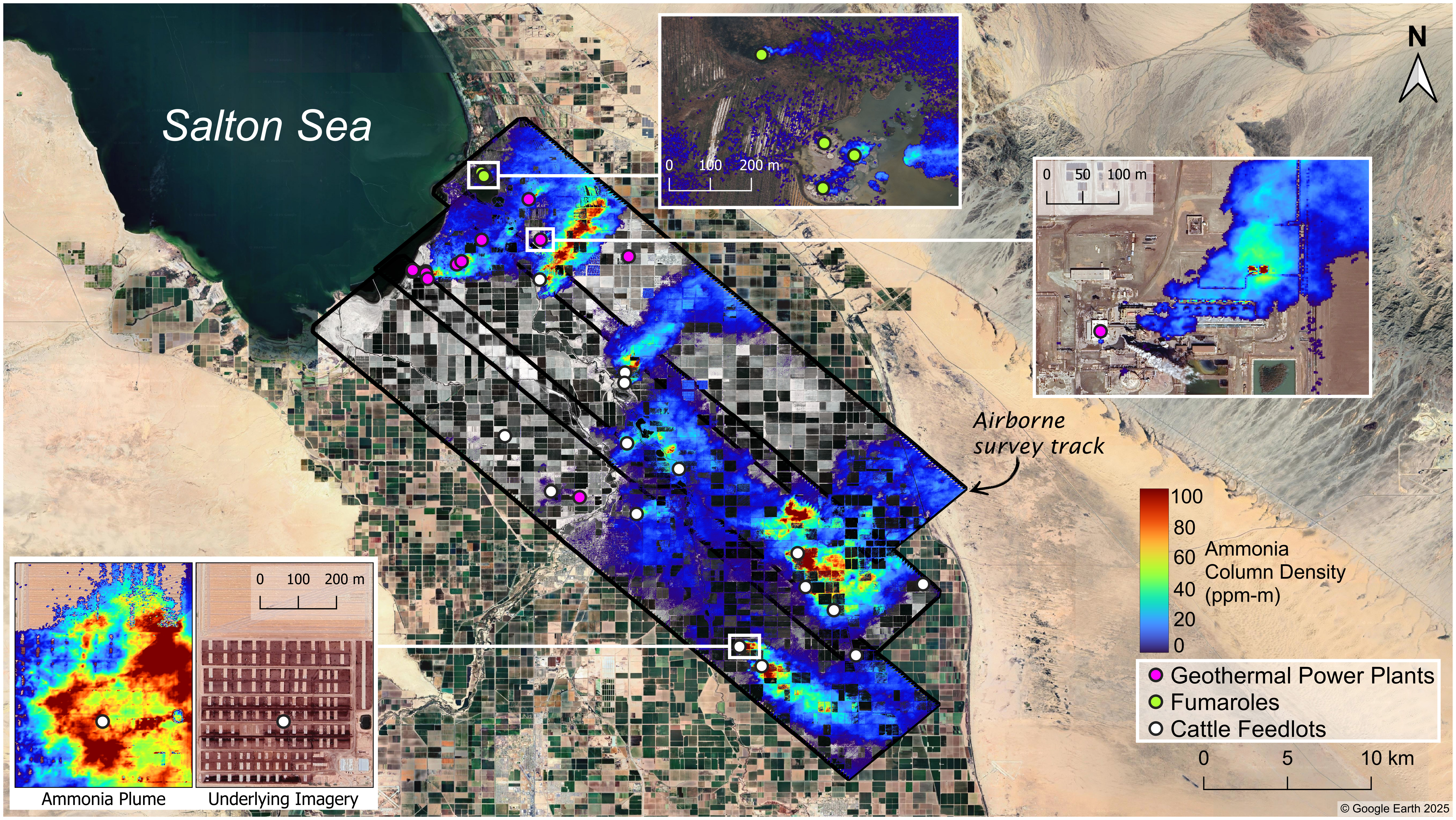A recent study led by scientists at NASA’s Jet Propulsion Laboratory (JPL) and the nonprofit Aerospace Corporation has demonstrated a new method for mapping ground-level ammonia emissions with unprecedented detail using airborne sensors. This approach promises to improve the monitoring of ammonia, a pungent gas that plays a significant role in the formation of harmful fine particulate matter (PM2.5) in the atmosphere. Published in the journal Atmospheric Chemistry and Physics in October 2023, the research focuses on high-resolution observations of ammonia plumes over Southern California’s Imperial and Eastern Coachella Valleys, areas known for significant ammonia emissions.
Ammonia is a key chemical precursor to PM2.5, tiny airborne particles that pose serious health risks when inhaled. These particles are small enough to penetrate deep into the lungs and bloodstream, contributing to respiratory and cardiovascular diseases, asthma, and even lung cancer. Although ammonia itself is not toxic at low concentrations, it reacts chemically with other gases in the atmosphere to form these dangerous particulate pollutants. Despite its importance in air quality, ammonia emissions have remained poorly monitored due to the difficulty in detecting and tracking the gas at fine spatial scales.
The new study addresses this challenge by using the Mako instrument, an advanced airborne imaging spectrometer developed by Aerospace Corporation. Mako detects ammonia’s unique chemical signature by observing the long-wave infrared light that ammonia molecules absorb and emit. Flying at low altitudes, the instrument can resolve ammonia plumes as small as six feet (two meters) across, allowing researchers to identify specific emission sources and track how plumes spread and merge in the atmosphere.
The research flights took place on March 28 and September 25, 2023, covering the Imperial Valley—an area southeast of the Salton Sea—and the Eastern Coachella Valley northwest of it. Previous satellite studies had identified the Imperial Valley as a significant source of ammonia emissions, but those measurements lacked the spatial resolution to pinpoint exact sources or track plume behavior. The Mako instrument’s high-resolution data revealed elevated ammonia concentrations near various sources, including agricultural fields, livestock feedlots, geothermal power plants, and natural geothermal vents.
One of the notable findings was the identification of distinct ammonia plumes from geothermal fumaroles—vents that release steam and hot gases from underground—in the southeastern area near the Salton Sea. These fumaroles emit ammonia as nitrogen compounds in the soil react with the released steam. In addition, geothermal power plants in the region were found to emit ammonia primarily from their cooling towers during routine operations. The study also captured ammonia emissions originating from cattle farms, where animal waste releases ammonia into the atmosphere. During the March flight, the largest cattle farm plume measured up to 1.7 miles (2.8 kilometers) wide and extended nearly 4.8 miles (7.7 kilometers) downwind.
To validate the airborne measurements, the research team coordinated with ground-based monitoring efforts. The South Coast Air Quality Management District (AQMD) operates a fixed monitoring station in Mecca, California, within the Coachella Valley, and scientists from the University of California, Riverside, provided mobile spectrometer data during the flights. These ground observations helped confirm the accuracy of the airborne data and revealed seasonal variations in ammonia concentrations. The researchers found that winds during certain times of the year can carry ammonia emissions from the Imperial Valley into the Coachella Valley, affecting air quality in communities downwind.
This detailed spatial and temporal information on ammonia emissions is critical for air quality management. Historically, regulatory agencies have focused more on direct sources of PM2.5, such as vehicle exhaust and industrial emissions. However, as regulations have reduced these primary emissions, attention has turned toward secondary sources—pollutants like ammonia that form particulate matter through atmospheric chemical reactions. “Ammonia plays a key role, but its emissions are poorly characterized and undermonitored,” said Sina Hasheminassab, lead author of the study and a research scientist at JPL.
The study’s findings have practical implications for environmental monitoring and public health. The AQMD has already taken steps to expand its ammonia monitoring network and extend the operation of the Mecca station, informed in part by this research. According to Payam Pakbin, manager of the Advanced Monitoring Technologies Unit at AQMD and a coauthor of the paper, ammonia is just one component of a complex mix of pollutants affecting the Coachella Valley, which also includes vehicle emissions, desert dust, and other agricultural pollutants. Understanding the relative contributions of

